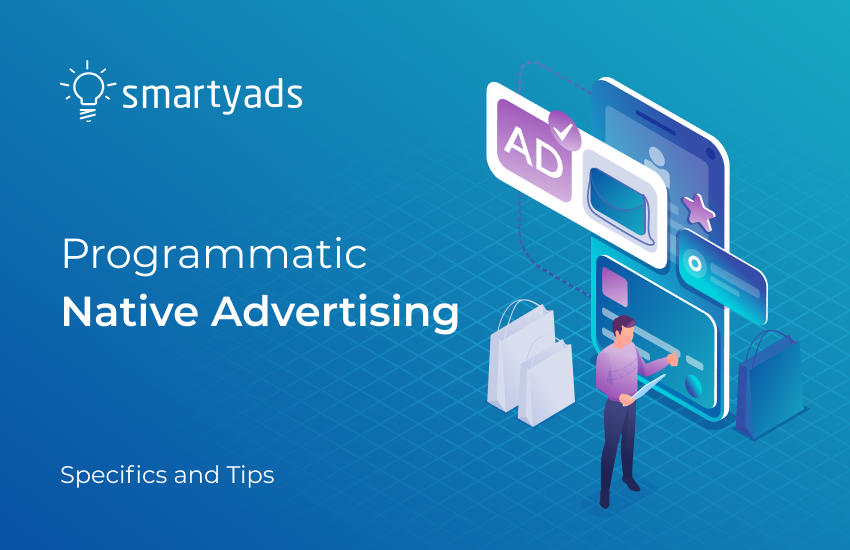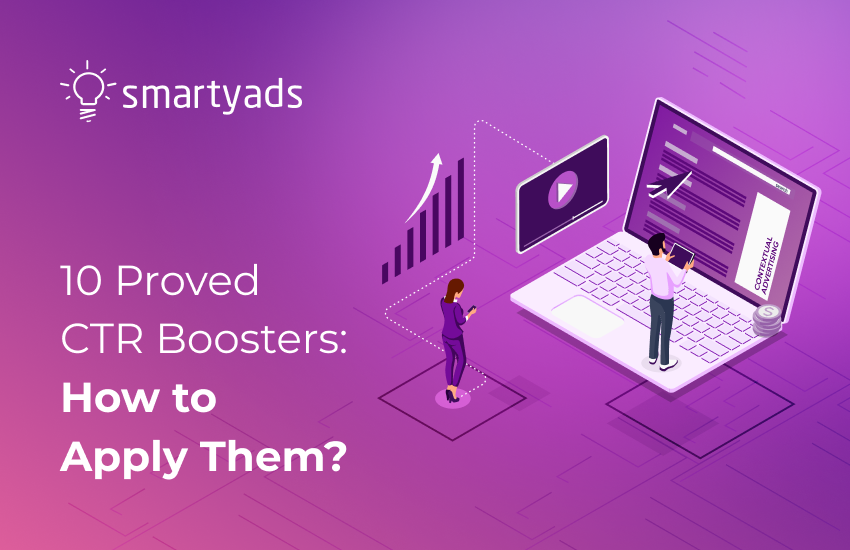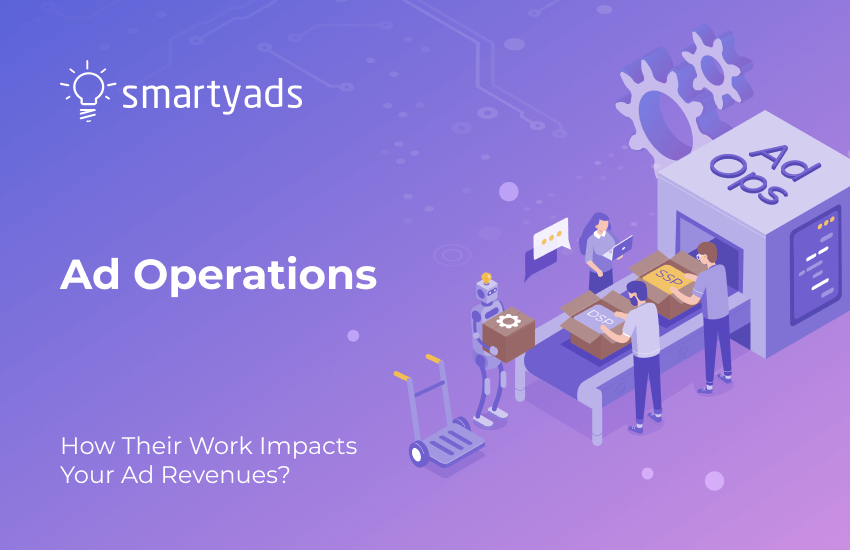Audiences are tired of the disruptive online advertising experience. The most common reason why users don't like advertising content is that it interferes with editorial content.
That is why programmatic native advertising has become a new trend. Digital marketers give away 61% of the digital ads budget to programmatic native advertising to promote goods and services.
In this article, we are going to explore what programmatic native ads are, how they can benefit your business and what are some best practices in programmatic native advertising.
What is programmatic native advertising and how do native ad units work?
Let’s break this into two key terms: programmatic advertising and native advertising.
Programmatic advertising or programmatic ad buying is digital advertising based on real-time bidding and leveraging machine learning.
Basically, an advertiser sets up a creative, defines their target audience for digital ads, budget, and capping. The self-serve advertising platform with real-time bidding does the rest: while the user opens the web page or landing page, the system analyzes the user and defines what digital ads should be shown to the user.
Then it chooses the most relevant advertising creative and displays it to the user. Thus, advertisers and media buyers can achieve a far more targeted response than was possible with manual placement.
With programmatic ad buying, advertisers can avoid negotiations with publishers or content marketers, they can display targeted native ads only to the right audience while avoiding ad fatigue.
So, what is native advertising? Native ad creatives organically fit the look and feel of the website or app where they are displayed in.
The only way you can tell that it is actually an ad is by finding a native ad headline that contains a “promo” or “ad” tag.
Native ads blend with editorial content or imitate it — it can be an article headline in a news feed, a post with a photo in the Instagram feed, or a video on YouTube or social media platforms, promoted listings, etc.
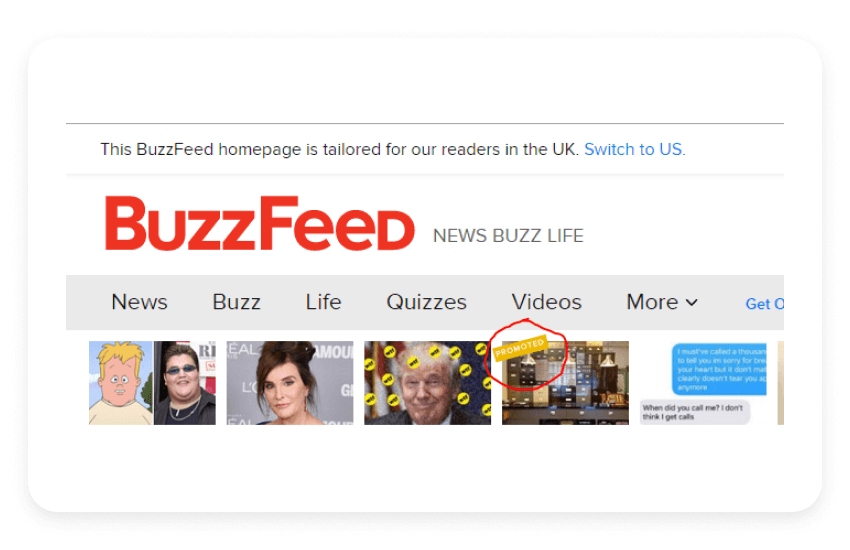
Martech advisor and similar sources often feature interesting stats about native ads' performance. The infographic below illustrates the benefits of native advertising over banner ads. Among those are better visual engagement and better purchase intent.
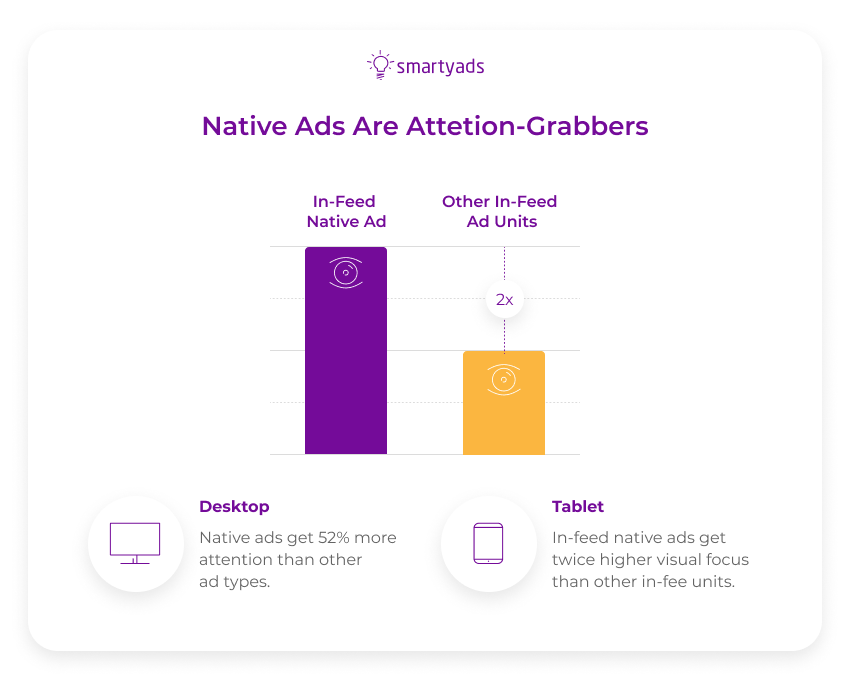
Native advertising and programmatic buying are a powerful combination. Applying both is a technique designed to enable advertisers to create non-intrusive ads which would be shown only to relevant internet users.
Researchers found that native advertising has a significant effect; it engages well and has higher conversions since it often includes valuable content that affects purchase behavior.
Native advertising engages better than paid search ads. However, oftentimes people think that native advertising fools the users, so it is mandatory to mark the creative with an "advertisement" tag.
If you create native advertising, not for social media but websites, demand-side platforms will automatically find the best placement to locate the ad in the content of the publisher; you just provide your creative or video.
Native ad formats (ad types)
DSP can offer different native ad formats for advertisers, for example:
- In-feed: displayed in the publisher’s feed, alongside their regular surrounding content. The creative matches the type of content that the publisher produces. For example, a tweet with a picture or video and a link on Twitter.
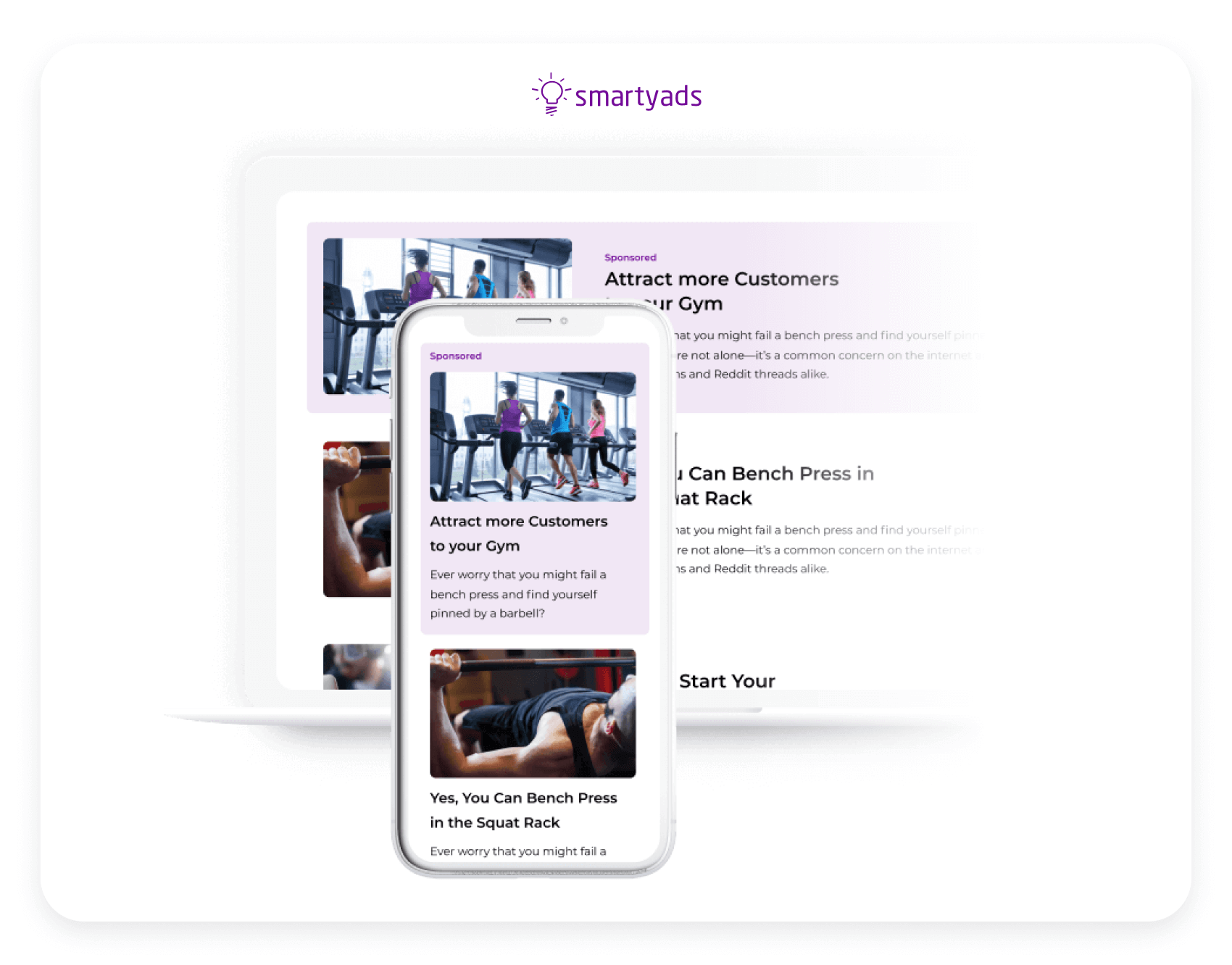
- Search: ad appears at the top of search results and looks exactly like other results. It is a popular native search ad offered by Google.
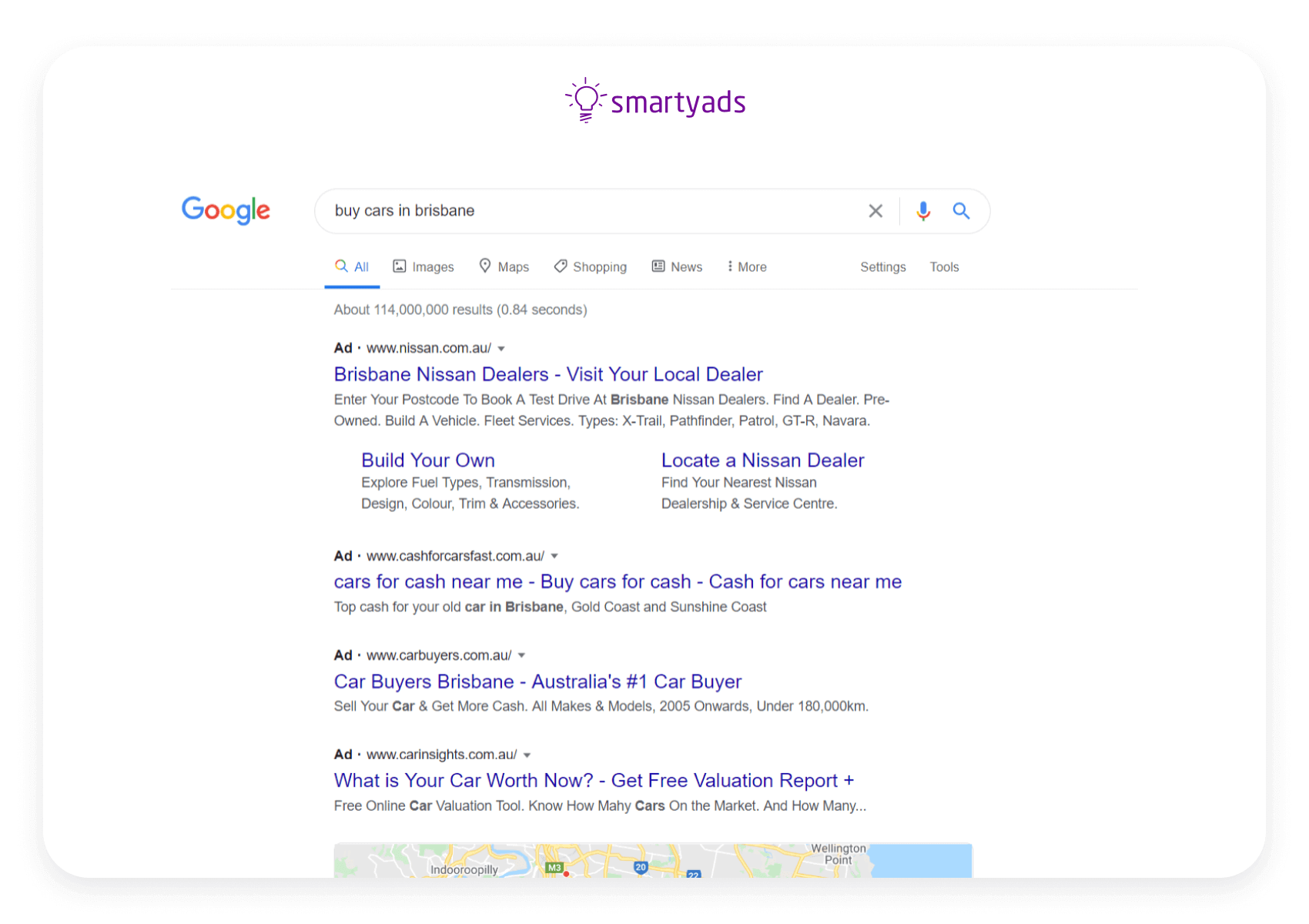
- Recommendations: it looks like recommended articles and videos that appear beneath the piece of surrounding content that you read. After the user clicks on the recommended link, they are taken to the other website. Sometimes these widgets contain links to other articles and sometimes they have ad materials. Recommendation widget natives are also available at SmartyAds DSP.
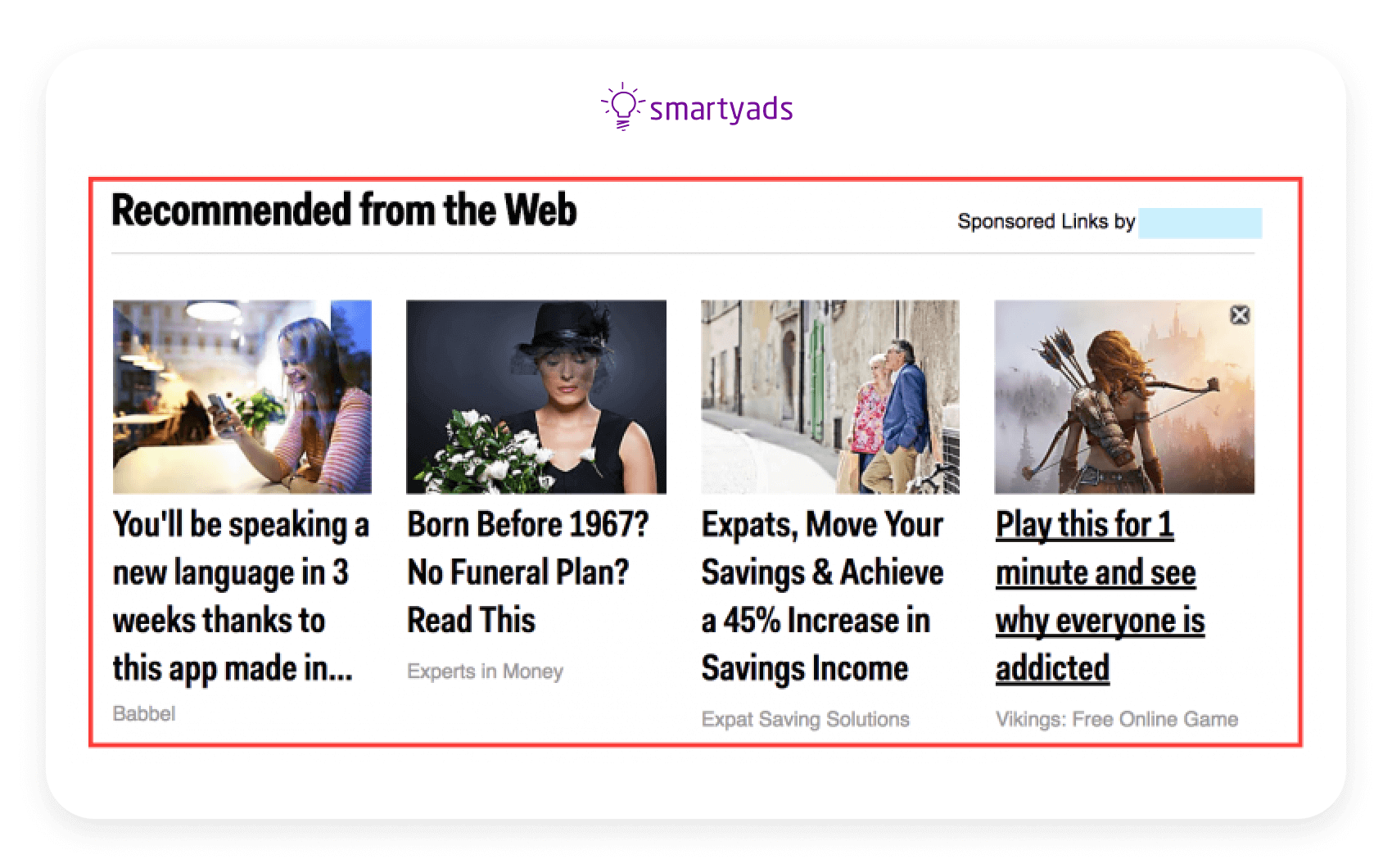
- In-app native: designed to match the feel and look of the apps where they are placed. Here is an example of a native in-app video (mid, pre, and post-roll). In the corners, you can see additional contextual ads from YouTube.
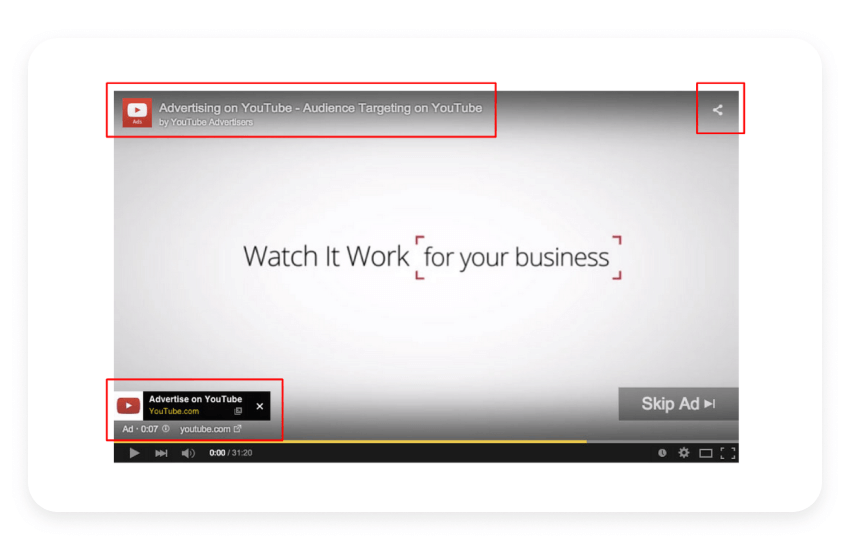
Benefits of programmatic native advertising
If you want to make native digital advertising, you’ll need to put lots of effort into designing the creatives. You have to create pieces of content rather than overly selling banners and make sure that they match the publisher’s feed if it is displayed on social media.
Using programmatic and native advertising has multiple perks in the long run. Below are some examples of why programmatic advertising boosts viewable impressions.
Better user experience and brand engagement
Programmatic native display ads are non-intrusive, unlike banners and pop-ups. It means that users do not feel like they are attacked with ads as soon as they browse the website's content.
If the user has to close the 100th pop-up, they will probably remember your brand name and brand logo but in the context of being extremely annoyed with them. With native advertising controls on a programmatic platform, you will be able to fully adhere to user preferences.
Ad-block friendly
Because of intrusive advertisements, more and more users turned to ad blockers that ban all the banners and pop-ups on the website. Ad blockers do not detect native advertising because it naturally appears in widgets, etc.
More trustworthy
Native display advertising is not so openly selling, so users are more likely to pay attention.
Users also admit that native ads are usually more creative and thought-provoking than traditional banners.
Delivers value
Creative native ads are not just selling the picture of a product. It is usually some type of explanatory article, storytelling video, or infographic.
You can barely learn anything besides the product information from the banner ads or display ads but you can get interesting insights from the native advertising. With programmatic native ads, premium publishers can serve relevant experiences in the right context getting better story sequencing while generating higher yields from media buyers (by using a supply-side platform).
Device-responsive
Since phone screens are very narrow, you have space only for the main content, text with occasional pictures that break the article, they are not placed alongside the text.
Native ads are different — they work perfectly well with any mobile device since they are just a part of the main content. Mobile native ads are user-friendly because they are displayed in the appropriate places, such an experience doesn’t interfere with content.
Moreover, native advertising generates user likes and increased engagement and this is something that banner ads and other display ads can’t do.
With the constantly growing mobile use that is rapidly outpacing desktop, leveraging native advertising and programmatic ad buying will help brands boost their mobile ad revenue.
Great for brand awareness
Programmatic native advertising is usually branded as informative content. Thus, it works best for the top of the funnel where customers just discover that they have a problem and look for solutions.
Higher click-through rates
On average, native advertising just performs better as it uses machine learning and contextual signals. Their click-through rate is 40 times higher than that of traditional display ads.
Combining better user experience and valuable marketers' messages, native ads capture the attention of the user and offer actually interesting information.
More power over ads performance
For example, if you were to create sponsored content with a news outlet, you would not be able to choose who to show the piece to.
You would also have to put so much effort into negotiations and article creation to just win over the audience of a single source that not all of your target audience might be reading.
Programmatic native ads allow you to control who, where, and when you will show the display advertising, and it is done with just a couple of clicks. With such functionality, you can achieve much better performance as programmatic adds relevance to the impression.
Best practices in programmatic native advertising
Programmatic native advertising works only if you know how to use it correctly. These simple tips should help you gain all the benefits of this ad type and produce creative native ads.
Firstly, you need precise targeting. If you do not want to spend hundreds of dollars on showing ads to irrelevant and uninterested users, you have to understand the age, location, interests, and gender of your target audience.
Secondly, you need attractive content. The definition of attractive content is quite different for various demographics.
If some enjoy colorful videos with lots of action and funny lines, others are keener on reading an informative article with statistics and infographics. You have to know what your audience prefers to digest and deliver the right type, look and feel of the content.
Thirdly, you need the right platform. Where does your target audience spend time — is it Instagram, Twitter, Facebook, TikTok, news portals, or particular websites? Suit your native advertising specifically for particular channels.
Avoid hard selling
Native ads are not big on hard sells, with luscious product descriptions and overly promotional headlines. Your native advertising creative should not be ignored, so we recommend offering actually valuable content — offer advice, tell stories, and share interesting facts.
For example, avoid headlines like “our product will make your hair shiny” but opt for “5 tips for shiny hair” instead and include your product in some of the advice.
Both the user and the publisher will benefit from such interactions since users will read actually relevant pieces of information and you will get more clicks and opportunities to showcase how exactly your product works and can help with the dull hair problem.
However, hard sells and coupons in programmatic native ads will go well for customers who are already at the bottom of the funnel.
Experiment, track, optimize
Accommodate programmatic native ads to have a lot of room for the experiment. With such an approach you can work with different audiences, platforms, and content types.
So do not hesitate to try different things to see what works best for different goals (brand awareness, sales, leads, etc.). A/B testing does not work in a traditional way here. You have to do different types of content (videos, articles, photos, search, audio) and do the testing within each category.
Change one thing at a time, compare the results, keep the good change and move on to the next one. After you have perfected the native ad, you can compare different content types and decide what works better.
Make it a part of the strategy
Don't work with programmatic native advertising alone. You also need equivalent banner ads, content marketing, and working with influencers to fully capture the audience at all steps of their customer journey. All the ads should work together to create an effective marketing strategy.
Conclusion
Now you know the main native advertising trends and native advertising best practices. With a smooth consumer experience and high CTR, native ads create a win-win environment for advertisers and customers.
Don’t know where to start with native advertising? Check out SmartyAds demand-side platform! We offer 5 types of programmatic native ads and a plethora of publishers to work with!
